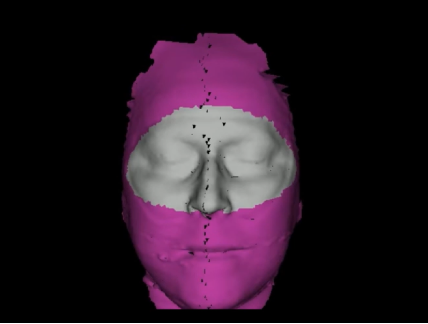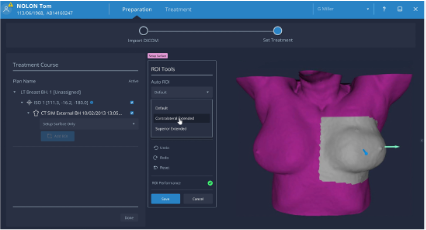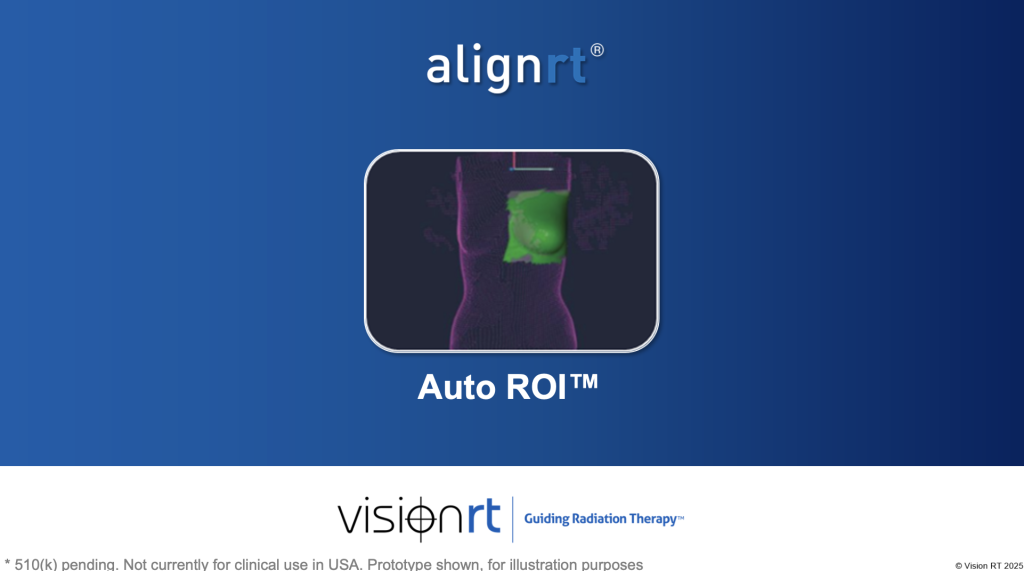Consistency and Automation for your AlignRT® Patient Prep
Defining the right area to monitor on each patient is a critical step for successful motion management.
Previously, drawing a Region of Interest (ROI) was done manually, using an array of tools within AlignRT. Ensuring uniform best practice across all users has been key to repeatability, and requires clinical resources and attention.
Now with AlignRT’s new Auto ROI™ module, regions of interest (ROI) for the most common body sites are defined automatically.
Automating ROI definition is intended to save clinics time in patient preparation, while ensuring consistency between users and patients. Different ROI templates are available to automate for supine breast, chest wall, abdomen, pelvis, brain and intracranial SRS. These can be used unedited or serve as a starting point for ROI construction.
FAQs
In our tests, 90-95% of regions of interest were deemed clinically acceptable. Those that fail can be edited immediately in the AlignRT software.
No, Auto ROI is based on deep feedback from multiple clinical sites, and adaptive modelling of clinically successful ROIs to apply to each new patient.
Different sites have multiple templates for default automatic ROIs, so your clinic can choose the best fit for your patient population. Auto ROIs can be edited so can just serve as a starting point if you want to change them.
Updates for Auto ROI are planned that should cover more body sites over time.
Auto ROI™ is part of AlignRT version 8, which is CE marked but is not for clinical use in the USA (510(k) pending)
Images are for illustration purposes only. Clinical templates will vary.
Get in touch
Ready to take the next step?
Vision RT’s family of SGRT solutions guide radiation therapy for better patient care at every step: Sim, Planning, Treatment and Dose. Whether you’re looking for a quote, a product demo (virtual or in-person) or just more information, please get in touch.


